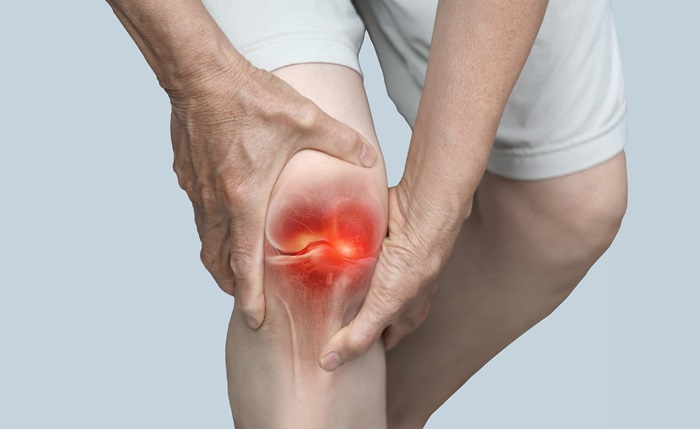If you’ve ever woken up with stiff knees or felt that nagging ache in your joints after a long day, you know how much joint pain can slow you down. Whether it’s your knees acting up or multiple joints giving you grief, finding relief can feel like a full-time job. The good news? There are tons of ways to ease the discomfort, from natural remedies to smart lifestyle tweaks. Let’s dive into some practical, down-to-earth ideas for tackling joint pain, with a focus on joint pain relief methods, natural remedies for joint pain, and more.
Related: Navigating the World of Medical Equipment and Consumables: A Comprehensive Guide
What’s Causing Your Joint Pain?
Before we get into solutions, let’s talk about why your joints might be hurting in the first place. The causes of multiple joint pain can vary widely, and knowing what’s behind your discomfort can help you figure out the best way forward. Here are some common culprits:
- Arthritis: Osteoarthritis (wear-and-tear on cartilage) and rheumatoid arthritis (an autoimmune issue) are big players.
- Injuries: Old sprains or strains can leave joints cranky for years.
- Gout: This one’s caused by uric acid buildup and can hit hard, especially in the big toe or knees.
- Infections or Inflammation: Sometimes, a bug or chronic inflammation can make joints swell and ache.
- Lifestyle Factors: Being overweight or sitting too much can put extra stress on joints, especially your knees.
If your knees are the main issue, searching for a knee pain doctor near me or an orthopedic doctor for knee pain near me can help you get a proper diagnosis. They might run tests like an X-ray or blood work to pinpoint what’s going on.
Physical Therapy: Your Joints’ New Best Friend
One of the most effective ways to ease joint pain is physical therapy for joint pain relief. It’s like giving your joints a personalized workout plan. A physical therapist will guide you through exercises to strengthen the muscles around your joints, improve flexibility, and cut down on stiffness. For folks dealing with chronic knee pain relief, here’s what you might expect:
- Gentle Movements: Think swimming, walking, or stationary biking—easy on the joints but great for mobility.
- Strength Builders: Exercises like leg lifts to support your knees.
- Stretching: Simple stretches to keep your joints from locking up.
Some therapists also use cool tricks like ultrasound or hands-on techniques to loosen things up. The best part? They’ll teach you moves you can do at home to keep the progress going.
Food as Medicine: Anti-Inflammatory Diet for Joints
What you eat can make a huge difference in how your joints feel. An anti-inflammatory diet plan for joints is all about loading up on foods that fight inflammation and ditching the ones that make it worse. Here’s a quick rundown:
- Eat More: Colorful fruits (berries, oranges), veggies (spinach, broccoli), healthy fats (avocado, olive oil), and fatty fish (salmon, mackerel).
- Spice It Up: Turmeric, ginger, and garlic are like nature’s anti-inflammatory superheroes.
- Go Whole: Swap white bread for whole grains like quinoa or brown rice.
- Cut Back: Say no to sugary snacks, fried foods, and too much booze—they can crank up inflammation.
Drinking plenty of water and keeping your weight in check also takes pressure off your joints, especially if you’re after chronic knee pain relief. Bonus: you’ll probably feel more energized overall.
The Best Supplements for Joint Health
Sometimes, your diet needs a little backup. That’s where supplements come in. Here are some of the best vitamins for inflammation and arthritis that people swear by:
- Glucosamine and Chondroitin: These help keep cartilage healthy and might ease knee pain over time.
- Omega-3s: Fish oil is a go-to for reducing joint stiffness.
- Turmeric: The curcumin in turmeric is a natural inflammation fighter.
- Vitamin D: If you’re low on this, your joints (and bones) might feel it.
- Collagen: Some folks say it helps their joints move more smoothly.
Talk to your doctor before popping any pills, though—supplements can mess with meds or cause side effects. Pair them with that anti-inflammatory diet, and you’re giving your joints some serious love.
Natural Remedies to Soothe Joint Pain
If you’re into keeping things natural, there are plenty of natural remedies for joint pain that can make a difference. Here are a few to try:
- Hot and Cold Packs: Heat loosens up stiff joints; cold calms swelling. Alternate them for the best of both worlds.
- Epsom Salt Baths: Soaking in warm water with Epsom salts feels amazing and might relax tight muscles.
- Acupuncture: Those tiny needles can work wonders for some people.
- Essential Oils: Rubbing on diluted peppermint or eucalyptus oil can feel soothing.
- Herbal Teas: Sip on ginger or green tea for a gentle anti-inflammatory boost.
These are great for adding to your routine, especially if you’re pairing them with other treatments.
Home Remedies for Arthritis Joint Pain
When you’re dealing with arthritis, home remedies for arthritis joint pain can be a game-changer. Here’s what you can do from the comfort of your couch:
- Stay Active: Gentle yoga or tai chi keeps joints moving without overdoing it.
- Lose a Few Pounds: Even dropping 5-10 pounds can take a load off your knees.
- Use Support: A knee brace or good shoes can make walking easier.
- Chill Out: Stress makes pain worse, so try meditation or deep breathing.
Getting enough sleep is huge, too—your body needs rest to heal and keep inflammation in check.
Can the Government Help with Costs?
Paying for doctor visits or treatments can add up, but government subsidies for joint treatment might lighten the load. In the U.S., programs like Medicare or Medicaid can cover things like physical therapy or meds for eligible folks. Veterans might get help through the VA, and some local health programs offer subsidies for chronic conditions like arthritis. Check with your doctor or a local health department to see what’s available where you live.
When to Call in the Pros
If your joint pain sticks around for weeks, gets worse, or comes with swelling, redness, or trouble moving, it’s time to see a knee pain doctor near me or an orthopedic doctor for knee pain near me. They might suggest:
- Injections (like corticosteroids) to calm inflammation.
- Scans to check for damage.
- In rare cases, surgery like arthroscopy or joint replacement.
Don’t wait until you’re limping—early treatment can prevent bigger problems down the road.
Putting It All Together
Easing joint pain is about mixing and matching what works for you. Maybe you start with physical therapy for joint pain relief, add some natural remedies for joint pain like a turmeric tea, and tweak your diet to include more salmon and kale. If your knees are the trouble spot, a visit to an orthopedic doctor for knee pain near me can give you a clear plan. And don’t forget to check out government subsidies for joint treatment to save some cash.
The key is to keep moving, stay consistent, and listen to your body. Joint pain might be a pain in the neck (or knee), but with the right approach, you can get back to doing the things you love.
Related: Your Go-To Korean Skincare Guide for Dry, Acne-Prone Skin in Your Late 20s


.png)



.jpg)
.jpg)







